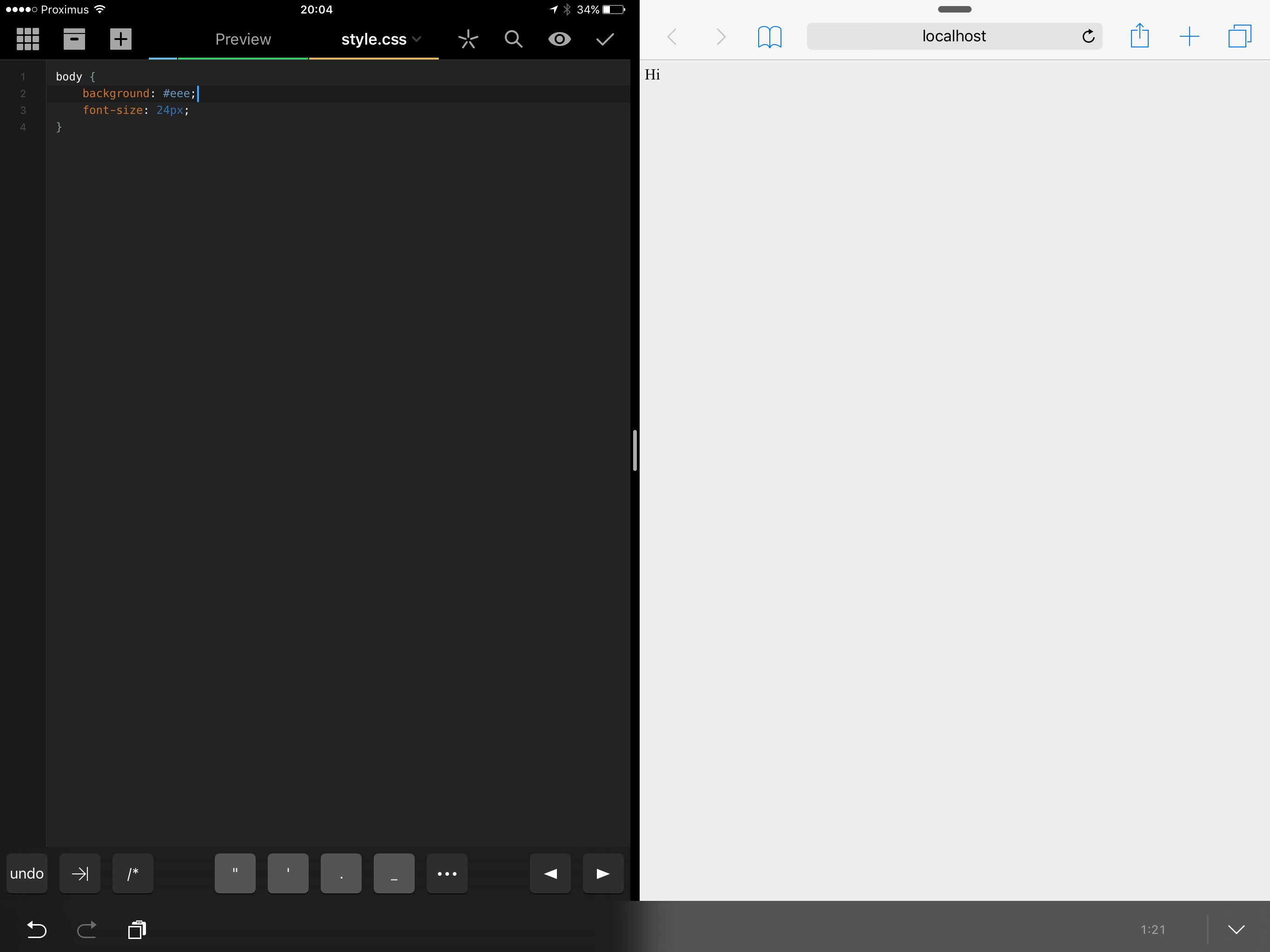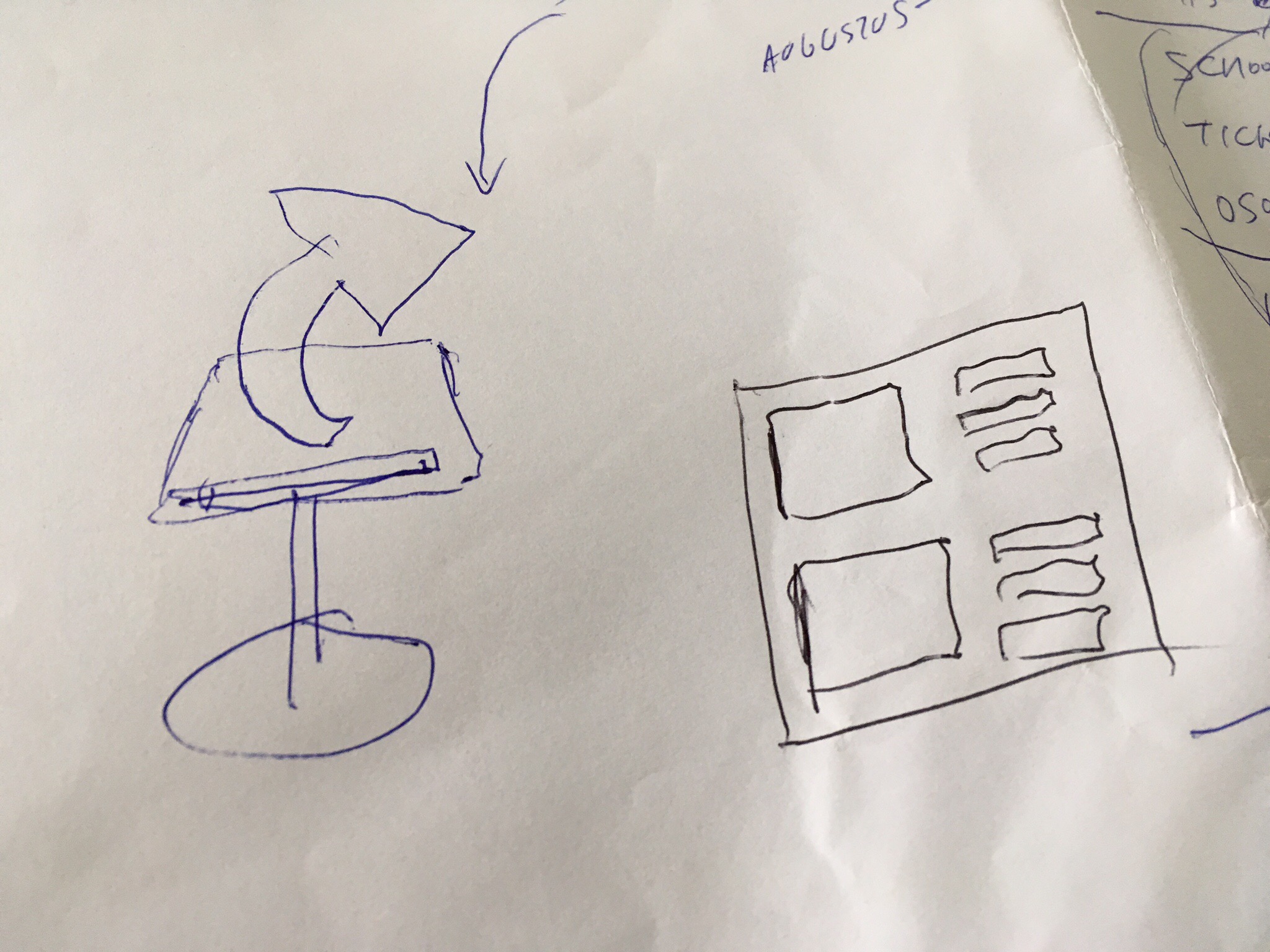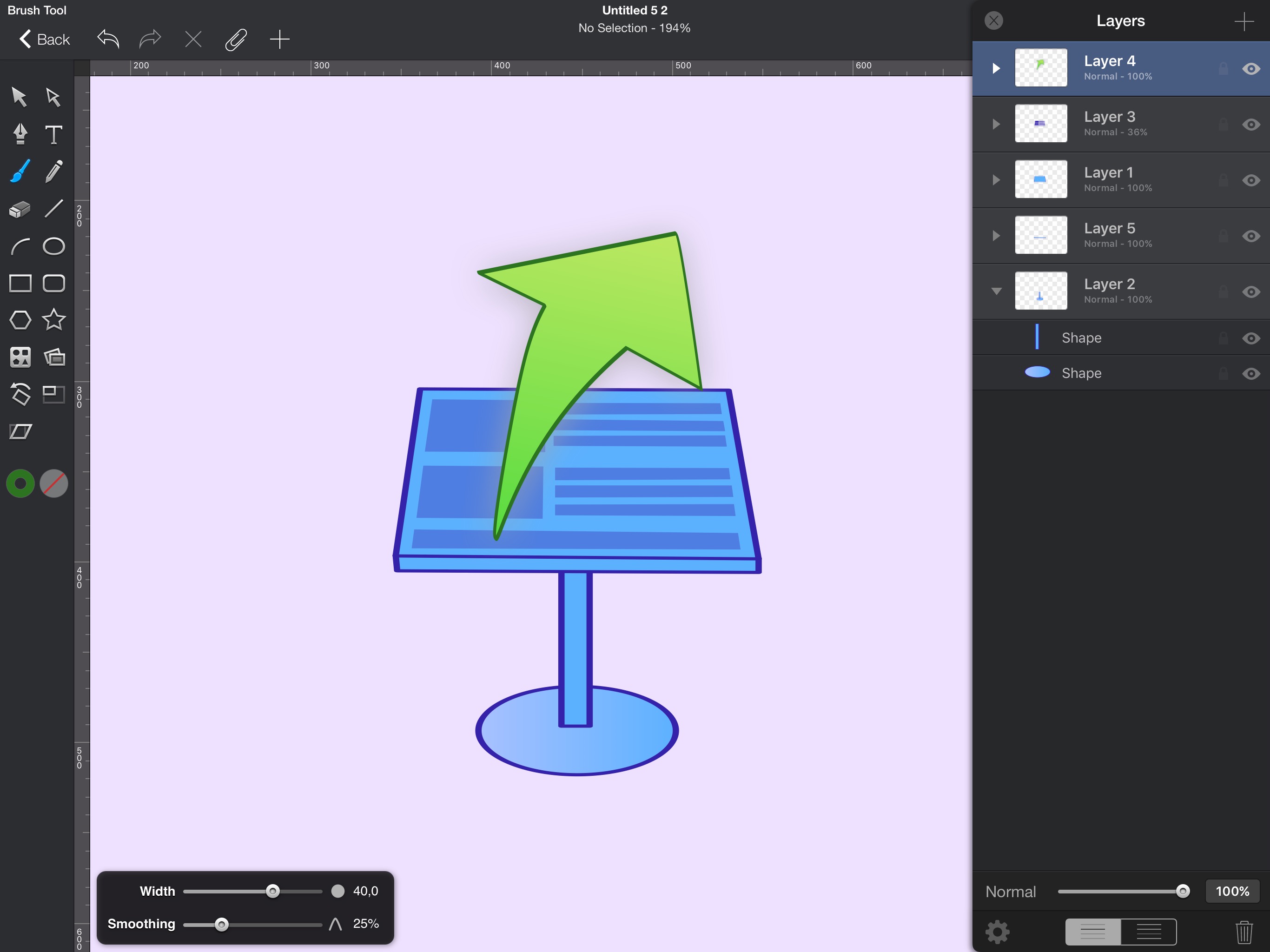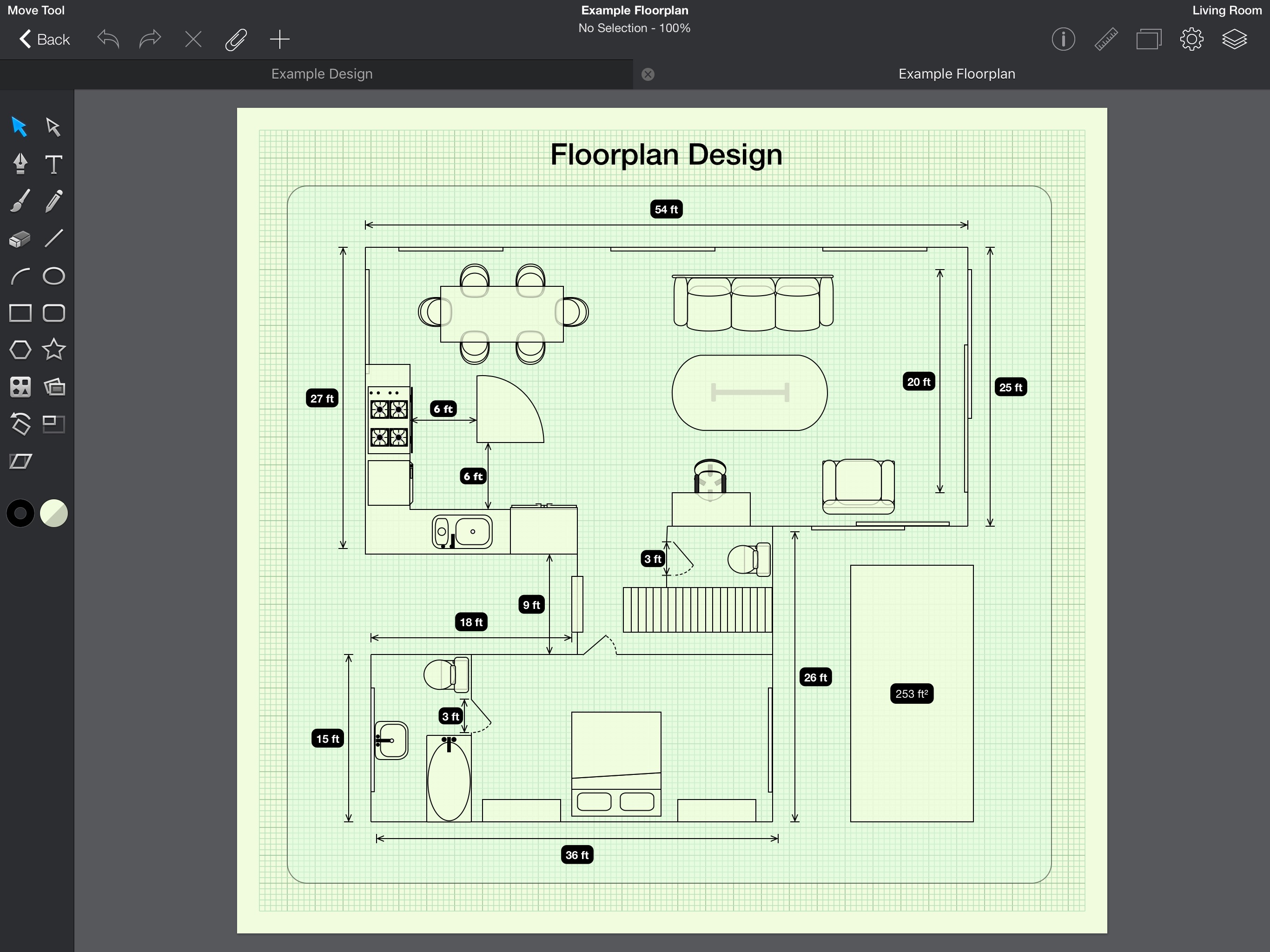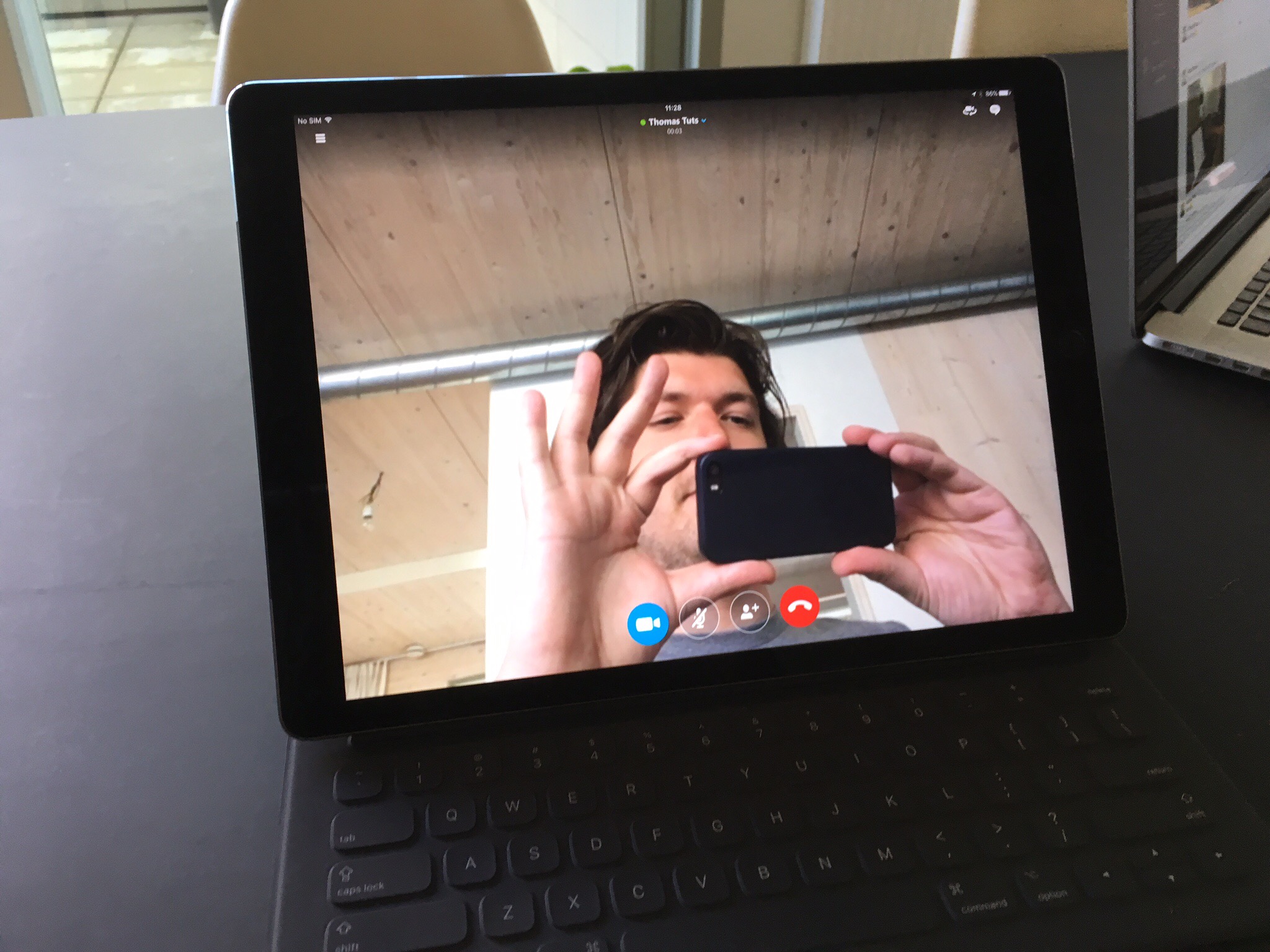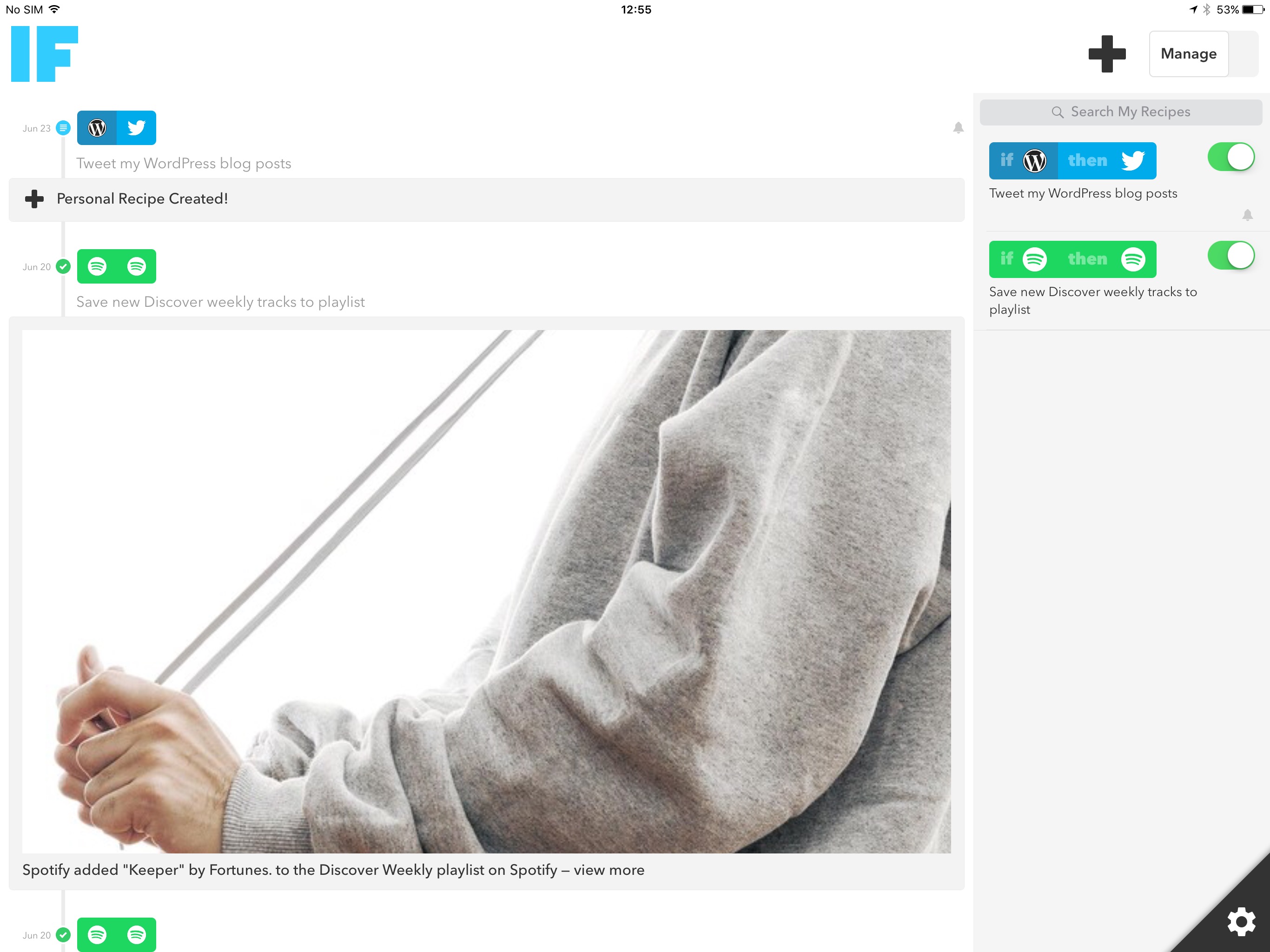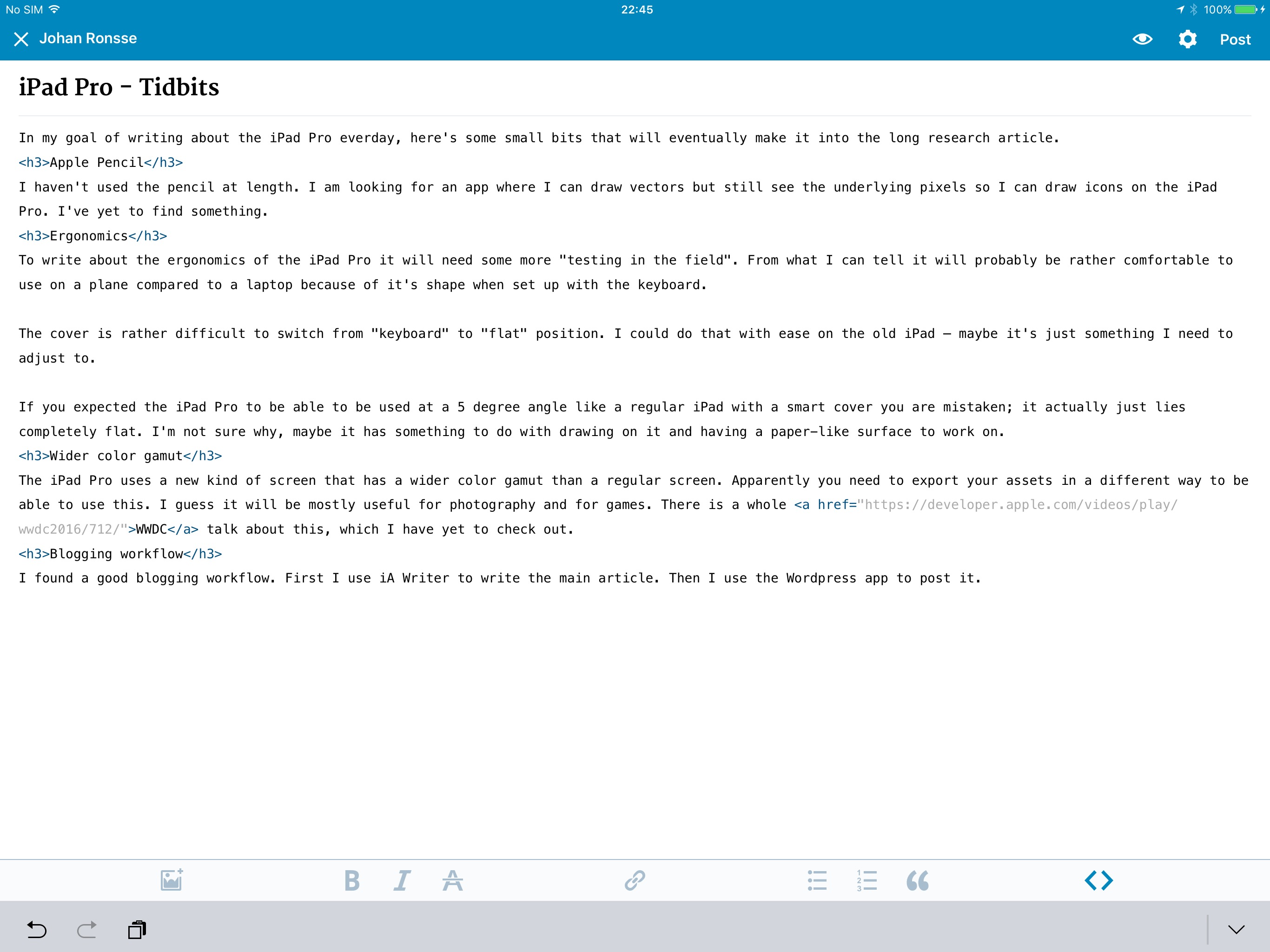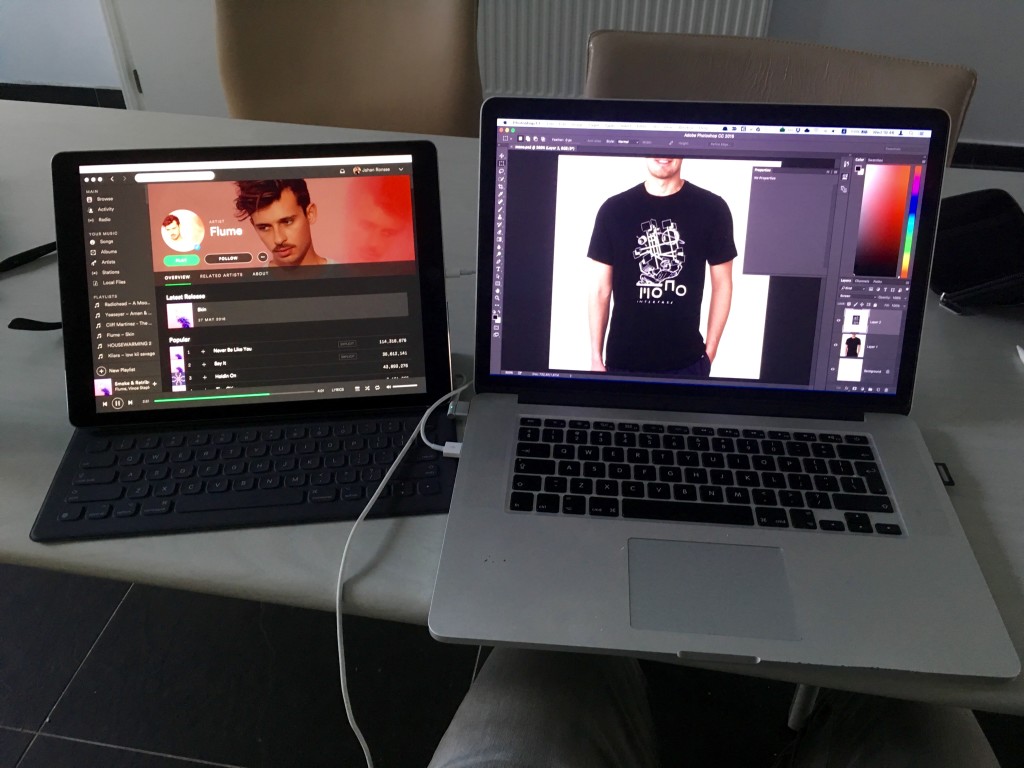In June I got the iPad Pro, and I had this goal of writing about the iPad Pro every day. I wrote about 10 blog posts… and then I gave up.
The thing with the iPad Pro is that, if I’m really honest, is that it’s rather useless for my purposes. Which is why I’m selling it (see here if you are interested).
In a lot of ways it’s a great machine – just not for me. In a previous blog post I wrote about who it is for.
The promise of “Pro” is that it’s for professionals, helping you do to your job. For me, a guy who works in the intersection between code and graphics, trying to use it for my kind of productivity work is an exercise in pain.
Given the current way I work, I need a file system; I need versions of what I’m creating; I need exact assets where I know exactly the color profile, the size, SVG export settings and whatnot. I need code that is checked into a versioning system, that can work with modern Javascript task runner workflows. I need multiple windows to test the output of my code.
The iPad does parts of this, but these parts don’t work together well. Every app is an island and trying to transfer data from one app to another works terribly. Organising your data is tough, because the core idea is that you data is tied to a specific application.
If you create an asset it’s tied to a specific app. This makes it hard to combine things across apps. Whatever I am usually making involves a massive amount of text and image files that need to be organised in one location. How to fix this? O wait, a file system.
In April, MacStories posted a video with their iOS10 wishes. At 1:10 you can see the exact feature that would make it more realistic to do any sort of web design on the iPad:
I had high hopes that Apple would announce something like this at WWDC 2016, but they didn’t. We basically got very little.
iCloud Drive, probably the core mechanism for trying to get apps to work together, is in a very sorry state. If you try to work on an iPad I hope you like flat file hierarchies.
One of the goals of buying the iPad was to see how the iPad Pro could help as a productivity tool for me. The reality is that it’s not there yet, and I’m not sure if it will be without a change in direction.
The thing is that not even talented app development teams like Serif – who showed off this really cool Affinity Photo for iPad recently – can fix fundamental flaws that are really part of the OS. If you are eventually using this to edit your professional photos, you’ll need a file system to sort out the ones that are RAW files, the ones that are edits, the ones have JPG equivalents. And you’ll need a way to back up this data that doesn’t rely on a single cloud service. Anything else would be unprofessional.
Apple says the iPad Pro is the future of computing. At the moment, it’s not. I’m hopeful for the future, but for now, back to the Mac.
